


































































A new edition of Natexpo, the global organic trade show, arrives after the successful Lyon show last year that gathered together around 10200 professionals from the sector. These numbers are expected to increase with the 2500 exhibitors and brands that will present their products in Paris over three days totally dedicated to organic business, from 22 to 24 October 2023. It’s the essential event for the organic sector in France, with 18000 professionals expected to attend this year’s Natexpo. Journalists, officials, exhibitors and visitors will meet and participate at the show to discover new products, trends and challenges through more than 200 exclusive talks, workshops and demonstrations.
The show is organised by SPAS ORGANISATION, France’s largest organiser of trade shows and consumer events dedicated to organic products, wellness, lifestyle and sustainable development, and LA MAISON DE LA BIO /NATEXBIO uniting the six leading organisations promoting organic market verticals (Cosmebio, Forebio, Natexbio, Synabio, Synadiet, Synadis Bio),
and representing 10000 companies dedicated to agriculture, food, retail, cosmetics and dietary supplements.
With a background of 60 years, Natexpo is the central meeting point for the organic and dietary supplements sector in France. “In 1965 it was titled the International Dietetics Expo, in 1969 Dietexpo, which evolved into Natexpo in 2003. “In 2013 the Natexbio Federation entrusted the reins of Natexpo to SPAS”, comments Florence Roublot, the organizer of the event.
Natexpo’s international dimension has increased again after the pause brought about by COVID, with nearly 30% of exhibitors coming from outside France. “Over 20 countries will be represented, with Italy, Belgium, Germany, Spain and the Netherlands leading the top 5,” explains Florence Roublot.

This edition presents numerous novelties for exhibitors and visitors,
such as the creation of the Dietary Supplements Village, two new thematic trails: Delicatessens and Alternative Grocery Store/The Newbies and Discovery circuits for the Circular Economy, being among others you will discover at the fair
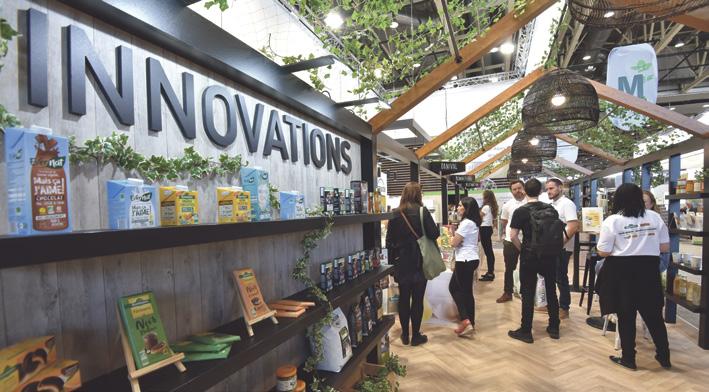
To reward and highlight the most innovative, impactful and original products launched on the market in the previous year, the Natexpo Awards will be celebrated and the winners announced by a jury of experts. The following product categories will be recognized with one award each: the new ones: Ingredients and Raw Materials (for food ingredients and cosmetic suppliers), and Seeds (to highlight smaller innovative structures); and the established categories: Fresh Products, Sweet Grocery Products, Savoury Grocery Products, Beverages, Dietary Supplements, Cosmetics and Hygiene, ECO Products / ECO Services, Equipment and Services for Retail and Brands.
After several years of strong growth in the sector and overcoming the various crises that have caused a decline and slowdown in the years following the pandemic, the signals now indicate that the beginning of the recovery is underway and will be complete during 2024, according to the specialist consultancy Xerfi and to Agence Bio. The organic sector not only offers quality products supportive to health and the planet, but also reflects the values of a more conscious consumer
Concerned about the climate crisis, biodiversity loss, the need to end wars and hunger, consumers challenge themselves about their own role in helping overcome these situations, which, in turn, stimulates the organic sector
“And there are still vast areas of growth to be cultivated”, as Laure Verdeau, Director of Agence Bio, reminds us. In France, for example, only 6% of food in canteens is organic, a far cry from the 20% aimed for in the Egalim Act. Additionally, the commercial catering sector is still “a blind spot”, where organic produce accounts for less than 2% of the food on offer: “If caterers were to spend 10% on organic produce, that would create an additional market worth €1.5 billion. There is enormous scope for growth,” says Laure Verdeau.

Natexpo is the ideal place to learn about market trends. These include:
1. Regions & Micro-Terroirs. Going back to our roots and looking after them.
The kilometre cult: Local production, doorstep distribution, short retail circuits, micro-dairies, micro-farms, micro-breweries. The treasures of our terroirs: Driven by resilience and the values of localism, new products from ‘here’ are in the vanguard of a new gastronomy. Regeneration, the new dimension of organic and the living world: Regenerative agriculture proposes “agricultural and grazing practices that
“The organic market will soon recover its dynamism and growth. Yesterday’s revolution, today’s resilience... and tomorrow’s regeneration!”Photo courtesy of Natexpo Photo courtesy of Natexpo NATEXPO Montse Mulé Cardona, Bio Eco Actual Editor|redaccion@bioecoactual.com
With a background of 60 years, Natexpo is the central meeting point for the organic and dietary supplements sector in France
The organic sector not only offers quality products supportive to health and the planet, but also reflects the values of a more conscious consumer
reverse climate change by rebuilding soil organic matter and restoring degraded soil biodiversity, resulting in both carbon drawdown and improving the water cycle,” according to regenerationinternational.org.
2. The Circular Economy The principle of circularity is becoming a priority.
Formats and sustainable packaging are contributing to the circular economy, with maximised use and minimised impacts. New life for packaging: LCA, or product life cycle analysis, is now commonplace in business. Zero waste in food and cosmetics is the new goal – where nothing will be thrown away. By-products are becoming valuable resources. Time for upcycling. With growing awareness of the value of water, Solid products have become a new market standard of beauty. And the newest, the art of dilution – tablets and granules to be diluted at home in many product categories.
3. The Performance of Natural Ingredients. Innovation has been driven by the plant-based cult.

Whether it’s ‘greentech’, ‘blue biotechs’ (from the sea and algae), fermentation or the craze for adaptogenic plants or bacteria...there is a whole new approach to protecting nature. A combination of science and traditional knowledge, hero ingredients and essential oils, probiotics and algae. The plant-based boost: Vegan gastronomy surprises and seduces with
new tastes and new ways of cooking. Fermentation’s super-actions: Linked to gut well-being, fermentation is an established trend that has been evolving for several years.
4. Slow, The comeback of the Organic Tempo. Mental health at an all-time low
Anxiety, depression,... Everyone wants to slow down and recover organic balance. The slow trend is returning as we try to resynchronise our natural rhythms.
Great mental health, the new ‘slow’ Paradise: Fragrances with relaxing or energising properties, drinks as infusions and herbal teas with CBD, and adaptogenic plants.

Alcohol free. The super cool trend: Cool new health shots or innovative taste profiles – including mocktails (alcohol-free cocktails).
Female biorhythms, the new wellness Eden: Understanding our natural rhythms, easing the pain of menstruation, whole body care and regaining hormonal balance – from puberty to menopause
PUBLISHER: Centipede Films, S.L.
POWERED BY: Bio Eco Actual Santa María, 9 1º 2ª 08172 Sant Cugat del Vallès - Barcelona - Spain Phone +34 937 474 319 +34 650 675 322 D.L.: B.1619-2017
PRINT 5,000 COPIES
www.bioecoactual.com bio@bioecoactual.com
DIRECTOR Enric Urrutia
EDITOR Montse Mulé
EDITORIAL TEAM Oriol Urrutia, Axel Domingo, Ariadna Coma
SUPERVISOR Jim Manson
PRINTED BY Comeco Gráfico Norte S.L.U.
CONTRIBUTORS Aurora Abad, Eduardo Cuoco, Paula Gómez de Tejada, Gerard Gontier, Ina Hiester, Natalie Prokopchuk, Toralf Richter
This publication has been possible thanks to the collaboration agreement with NATEXPO For reprints and permissions contact the publisher. Bio Eco Actual does not assume and hereby disclaims any liability to any person for any loss or damage caused by errors or omissions in the material contained herein, regardless of whether such errors result from negligence, accident or any cause or whatsoever.
Bio Eco Actual is not responsible for the content of the advertisements included in this publication.
Bio Eco Actual is registered trademark owned by Centipede Films S.L.
More information at www.natexpo.com
2023 ©Centipede Films, S.L.
The slow trend is returning as we try to resynchronise our natural rhythms
The big surprise of the last three years was the sudden reversal of fortune for the organic market, which saw double-digit growth turn into an overall sales decline of 12% in 2022. The end of a golden age of organic trade in France seems to be confirmed by a majority of specialized grocery stores reporting falling customer enthusiasm in 2022. However, look a little closer and areas of genuine positivity can be seen.
At the end of 2022 there were 3,086 specialized organic stores in France, down from 3,258 units in 2021 (a drop of 5.3%). But this slight fall can be put into perspective when it is remembered that the total number of specialist stores was 2,826 in 2017.
Against a national market decline of 12% in 2022, Biocoop, the leading specialist organic retailer in France, has been fighting back, delivering

a turnover of 1.495 billion euros in 2022, down 5.6% on the previous year.
The organic market in France has been declining since 2021, but this economic situation should be put into perspective.
While Biocoop announced 35 closures in 2022, it opened 41 new stores
during the year. As of December 31, 2022, Biocoop thus had 765 points of sale (741 in July 2023). Safeguard and receivership procedures are multiplying within the brand, as specialized organic retail encounters a period of strong market turbulence.

An activist brand for 35 years, Biocoop has recently doubled down on its values and positioning: “Continue to offer a demanding organic, fair, and rooted in the seasons,” Pierrick De Ronne, President of Biocoop, has commented.
Naturalia (part of the Casino Group) is the second largest network
of specialized stores in France. With 245 points of sale, its turnover of 355 million euros in 2022 was down 7.8%. After months of preparation, the retailer’s first concept store outlet called “the Parisian farm” opened its doors in March 2023 in Paris 12th. A second pilot store opened in SaintOuen (93), north of Paris on August 4. The development represents an important brand repositioning and a new direction in shopper experience, drawing inspiration from iconic US natural grocery retailer Trader Joe’s (with more than 550 stores across the USA, and owned by the founding family of Aldi).
Naturalia says it wants to introduce more “pleasure and playfulness” into the organic retail space and move away from the sector’s image of worthiness. The retailer believes the new store format will appeal both to existing loyal organic consumers and those who are looking for a more enjoyable and celebratory retail environment – and who may have abandoned organic in 2022.


La Vie Claire, France’s leading organic franchise operator, with a network of 400 stores (franchise & integrated), saw its turnover fall by 8.7% to around 325 million euros at the end of 2022. More encouragingly, the management at La Vie Claire report that “the first figures for 2023 show a return to growth”.
Bio c’ Bon and So.bio, both owned by the Carrefour group, operate more than 150 specialized organic stores across the two brands: Bio C Bon with 77 stores including 53 in Paris and the Paris region, and So Bio with 74 points of sale. Carrefour remains very discreet about its turnover.
At the end of 2022 there were 3,086 specialized organic stores in France, down from 3,258 units in 2021 (a drop of 5.3%)
NaturéO (60 stores in 2019, 36 in 2023) produced a turnover in 2022 of less than 100 million euros, compared to 120 million euros the previous year. Last spring, the brand announced to its suppliers that it was placing its stores and its Compagnie Bio & Nature headquarters in the safeguard procedure (the safeguard procedure is a legal remedy open to companies encountering financial difficulties).
In June 2022 L’Eau Vive also announced the opening of a safeguard procedure (a period during which the assets of 23 stores are frozen, out of the 27 of its integrated portfolio). The franchise stores are not affected with
the exception of one store in receivership.
Centrale Bio, the logistics operator for l’Eau Vive, is ceasing its activity due to the “decline in the market” for organic products.
Biomonde operates 150 stores in 2023, compared to 170 in 2020.
Les Comptoirs de la Bio, with 81 stores (July 2023) became 100% owned by the group in 2022, and

A level of stability can be seen in the “small networks”, including Satoriz with 39 stores (one closure in 2022), Leopold market, 27 stores, Le Grand Panier Bio,19 stores, and My Bio Shop with 23 stores.
recorded a turnover of 140 million euros from 98 points of sale in 2022. A year earlier, the network reported a performance of 311 million euros from a portfolio of 151 stores (including network sites, but not necessarily under the Les Comptoirs de la bio banner)!
Marcel & Fils currently operates 62 stores. The acquisition of the 16 La Vie health stores in 2022 will enable it to reach around 140 million euros in turnover
To ease the decline in consumption of organic products, specialized retailers are trying to work on their price image. They are able to use several levers, including product mix, and borrowing tools from general retail, such as promotions in partnership with processors. “Price is not a barrier. The key is education”, says Laure Verdeau, director of Agence Bio.

Out of six organic outlets, three are in decline, three others are growing (outside the home: public and commercial catering). The win-win solution since 2022 seems to be the effective marrying of organic and local.
Biocoop executives are betting on a return to growth no later than 2024, and many traders have already announced a restart of sales in their stores in the first quarter of 2023.
The organic market in France has been declining since 2021, but this economic situation should be put into perspectiveAurora Abad, OPTA Association Manager
Organic food and farming practices differ fundamentally from conventional ones because they rely on opposite environmental ethics. Despite their differences, both systems must find a way to effectively and responsibly coexist. The share of EU agricultural land under organic farming has steadily increased in the last decade, to reach 9.9% of the total agricultural area in the Union in 2021. Echoing the growth of production, retail sales of organic products in the EU have
also doubled since 2015. Under the Green Deal, the European Commission has set a target of ‘at least 25% of the EU’s agricultural land under organic farming by 2030’. Like it or not, both systems need to move forward hand-in-hand.

The political commitment in the Green Deal has not been translated into policies that guarantee a smooth coexistence between both systems, which comes at a cost to organic operators. The management of the adventitious presence of chemical pesticides in organic products is a blatant example of that inequity. The migration of phytosanitary products used in conventional farming into the organic food chain is well substantiated, and exits within a context where no progress has been recorded in the last years towards reducing pesticide use and risk level in the environment. The European Food Safety Authority (EFSA) acknowledges that the most common-

ORGANIZATIONS
ly found pesticides in organics are also contaminants present in the environment. Despite that evidence, the organic operator–who faces the challenges associated with producing food without pesticides and other chemicals–is not only tasked to put in place measures to prevent contamination with chemicals used in conventional farming, but also bears the burden of proof when such substances are found in the organic product. This results in multiple laboratory analyses and lengthy investigations, during which the entire organic production is put on hold. The burden and cost placed on the shoulders of the organic operator for substances he is actually not using represents a deviation from the polluter-pays-principle and has the perverse effect of discouraging growers from taking the path of non-chemical food and farming practices.
Against this background, OPTA Europe has greeted with scepticism the European Commission’s proposal on New Genomic Techniques (NGTs). Organic consumers–and quite probably some conventional ones–expect prod-
ucts to be produced without genetic engineering and will request such a guarantee from the food brands they choose. While the Commission proposal explicitly prohibits NGTs in organic production and includes an article requesting Member States to ‘take appropriate measures to avoid their unintended presence ‘, it is far from clear what it implies and who will assume the cost and burden of such measures.
Drawing lessons from the unfortunate precedent of pesticides contamination, OPTA Europe requests to properly address the coexistence issue in the NGTs regulation by including legally binding traceability and labelling requirements for all NGTs along the supply chain until the final consumer, as well as a tax mechanism on NGTs to fund the precautionary measures to be taken in organics, the regular controls along the supply chain and a compensation to organic operators in case of unintentional presence.
‘Coexistence cannot be understood as unilateral damage control efforts by the organic sector’ said Aurora Abad, Secretary General of OPTA Europe. “An harmonious coexistence of both systems must be based on the basic principle that each one is free to choose and also accountable for the consequences of his choices”
OPTA Europe www.opta-eu.org is the membership organization representing the interest of EU organic processing and trade companies, as officially recognized by EU institutions. Its membership encompasses 12 EU Member States plus North America and Switzerland. Taken together, the companies represented by OPTA Europe account for a large share of total EU imports and exports, and processing of organic products.

Like it or not, the organic and conventional food and farming systems need to move forward hand-in-hand
Drawing lessons from the regrettable precedent of pesticides contamination, OPTA Europe wants to see the coexistence issue in NGTs regulation properly addressed
biofach.de/en/newsletter



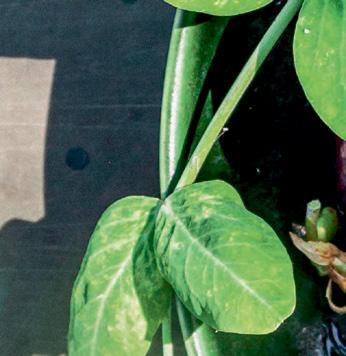
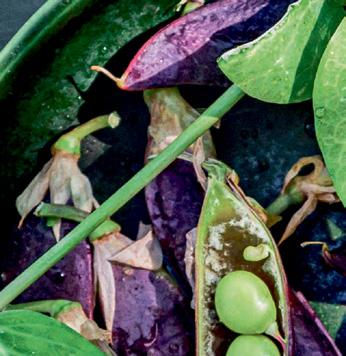
Nuremberg, Germany 13 -16.2.2024







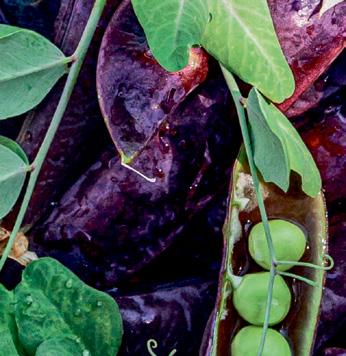

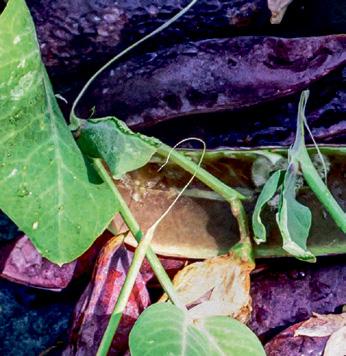


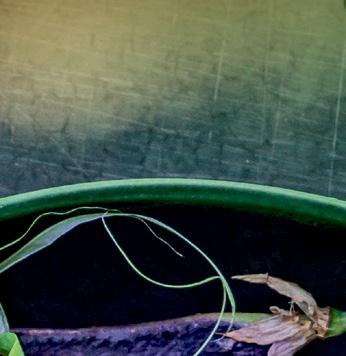
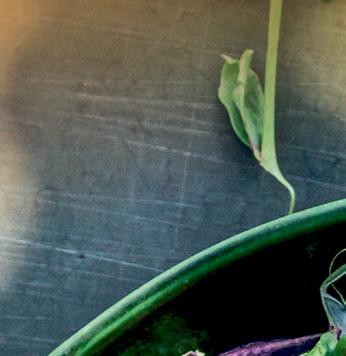


Organic food production is the key to a better world. Together, we are protecting the climate, creating sustainable solutions and shaping a worthwhile future for the coming generations. BIOFACH 2024 and the accompanying BIOFACH Congress are where the visionaries, movers and shakers of the international organic industry connect with one another to pave the path to a more sustainable food system. Can we count you in?
#intoorganic
In association with VIVANESS International Trade Fair for Natural and Organic Personal Care
What comes into your mind when you think about Ukraine? In the past it was Chornobyl, today it is the Russian full-scale war that has been raging in Ukraine since 2022. However, when you would ask importers of organic products in Europe, they will tell you something in addition –Ukraine is the biggest European exporter of organic products to the EU.

Before the war, Ukraine had 42 million hectares under agricultural cultivation. According to monitoring by the Ministry of Agrarian Policy and Food of Ukraine 422,299 hectares (about 1% of the total agricultural area) were certified organic in 2021. The Ukrainian organic sector has its origins in Soviet times in the 1970s, when a few pioneers started with notill farming. The movement really took off about 15-20 years ago, when the Swiss SECO-FiBL project, in close collaboration with local organic stakeholders and policy makers, facilitated
Ukrainian organic sector development through knowledge-transfer, creating trade opportunities and strengthening networking. At the same time, a wider organic product offering and awareness creation activities resulted in the availability of organic products at supermarkets and increased demand for organic products in local markets, especially in large cities.
But what happened with the Ukrainian organic sector and to organic exports after the Russian invasion started?
Surviving during the war – how the organic sector showed strength, resilience and consolidation

Since the beginning of Russia’s full-scale invasion of Ukraine on 24 February 2022, the Ukrainian organic sector, and the entire agri-food
industry, has been suffering and experiencing losses. According to a survey conducted by the stakeholder platform Organic Initiative and the NGO Organic Ukraine, the most significant negative impacts on organic production processes include the overall safety situation (74 percent), access to financial resources (72 percent), destroyed infrastructure (65 percent), lack of fuel and lubricants (79 percent). Many organic operators have experienced direct losses because of occupation and direct hits, seaport blockades, destruction of infrastructure facilities and supply chains, and a significant increase in prices of inputs, fuel and logistics. The main problems of the domestic organic market are the disrupted supply chains, migration of many organic consumers to other regions and abroad, decreased purchasing power and, therefore, reduced demand for organic.
Massive hits on energy infrastructure facilities caused power cuts and emergency blackouts in the majority of regions in Ukraine. Lack of light, water, heating, internet and mobile connection became part of new living and working conditions for Ukrainians during last autumn and winter
Most of the Oblast (regional) state administrations in Ukraine, previously supported organic producers in their regions. However, due to martial law in the country, regional support for organic producers remained only in very few regions. The organic digital communication campaign,
which was launched by the Organic Initiative, targeting consumers in 2021, was postponed, as was the introduction of organic products into public procurement for schools and kindergartens in Ukraine due to the full-scale war.
The big surprise is, that despite the terrible consequences of the war and the fact that many organic farms had to cease production in the occupied areas, other organic operators, processors and traders continued defying all odds. As the ability to export to the US market via the ports on the Black Sea was almost impossible, importers from Europe helped the Ukrainian operators to find a market for their products. As the main sea routes were blocked, importers helped their Ukrainian suppliers to find logistics solutions with trucks and railway cargo. Especially in the first months of the invasion there was a unique wave of solidarity among the organic movement in Western Europe, remembers Toralf Richter.
Thanks to the tireless efforts of partners across Europe, exports from Ukraine to the EU and Switzerland further increased during the period of war. The courageous resistance of these farmers, their creative and flexible logistical solutions and a great wave of solidarity from international buyers have made this possible,
In 2022, according to the EU database Traces, 219,125 metric tons of organic products were exported from Ukraine to EU countries, an increase of 16% compared to 2021. As a result, Ukraine became the third largest exporting country to the EU (behind Ecuador and the Dominican Republic).
The largest European importers of Ukrainian organic products (by volume) are, according a study by the Ukrainian Certification Body Organic Standard, the Netherlands, Germany, Austria, Switzerland, Poland, Lithuania, Italy, the UK, Czech

Before the war, Ukraine had 42 million hectares under agricultural cultivation, 1% of them organic123rf Limited©ostapenko
Republic, Bulgaria, Romania and France. Ukraine has 18 free trade agreements with 46 countries. The most exported organic products (by volume) from Ukraine in 2022 were corn, soybeans, wheat, sunflower oil, sunflower cake, sunflower, frozen bilberries, barley, rapeseed, frozen wild berries (rose-hip; sea-buckthorn; lingonberries; hawthorn; elderberries; black chokeberry; blackthorn;

rowan berries; cranberries; chokeberry), hulled millet, dried walnut kernel, concentrated apple juice, frozen raspberries, millet, flax seeds, frozen blackberries, peas, oats, frozen strawberries, mustard, lupine, honey, apples, birch sap, oat flakes, buckwheat and dried echinacea root. More higher value organic products have been added to Ukraine’s export portfolio over the last few years. But while the volume of organic exports increased for railway and road vehicles, it decreased for sea vessels.
The state institution Entrepreneurship and Export Promotion Office plays a leading role in organic export facilitation and capacity development for Ukrainian organic exporters.
Also crucial to this success was the financial support from international projects financed by Switzerland (SECO), Germany (BMEL), the EU and USA (USAID), which continued with project activities in Ukraine despite the full-scale war.
Despite the difficult situation, the Ukrainian organic sector and policymakers continue to work hard for a recovery and further organic market development. However, according to the latest local survey, in 2022, 12% of organic operators had to cease organic production and one-third of the certified organic area is broken away due to the consequences of the war. Nevertheless, Ukrainian organic operators, representatives from Ukrainian authorities as well as private service providers strongly believe in the recovery of the organic sector after the war is over. For the time being any support is highly welcome.
In 2022, according to the EU database Traces, 219,125 metric tons of organic products were exported from Ukraine to EU countries, an increase of 16% compared to 2021
On 5 July, the European Commission published its proposal on plants obtained by certain new genomic techniques (NGTs). As the European organic movement, we consider this proposal misguided, dangerous for European seed autonomy, and a distraction from the agroecological solutions needed to move agriculture towards sustainability.
While the proposal explicitly prohibits NGTs from organic production – in line with the position of the organic food and farming sector that no Genetically Modified Organisms (GMOs), including those derived from NGTs should be used in organic production – it does not provide a clear basis to protect GMO-free and organic production with co-existence measures, nor to ensure a fair distribution of risks and burdens.
This is why we urge Members of the European Parliament (MEPs) and governments to act to protect the freedom of farmers and consumers not to use or buy products from genetic engineering, and to prevent the monopolisation of genetic resources through patents.
The proposal came a few days after IFOAM Organics Europe’s General Assembly adopted a resolution to keep organic GMO-free in favour of a system-based approach of innovation. In the resolution, an overwhelming majority of the European organic movement (97.69% of votes in favour, 2.31% against) re-affirms the demand of organic breeders, farmers, processors, certifiers, traders, and retailers to preserve their freedom of choice to remain GMOfree, including GMOs derived from these so-called New Genomic Techniques (NGTs).
As our President, Jan Plagge, put it: “Exempting certain NGTs from risk assessment, traceability and labelling is a step backward for biosafety and consumer information, and is unlikely to bring any benefit for sustainability. Rather, this proposal is a massive accelerator for a lucrative
business model from the biotech and chemical industry. It seems that the European Commission unfortunately followed misleading industry promises and their business interests ahead of closing the dangerous loopholes in the patent rights framework. This is a bad day for the European model of a diverse farming and breeding sector. Now, the Council and Parliament should at least maintain traceability for NGTs all along the production chain, a legal basis for measures to ensure co-existence, as well as consumer information.”
Consumers want to know how their food is produced, and expect that organic production is done without genetic engineering. In terms of sustainability, organic agriculture has been at the forefront of transitioning our agricultural systems to practices which are good for biodiversity and planetary health. But the success of our movement depends on consumers’ trust, and traceability and labelling of all GMOs are essential to protect the organic market and the reputation of organic products.
For ‘Category 1 NGT Plants’, mandatory traceability along the entire production chain is eradicated and replaced by insufficient provisions for a public registry and seed labelling, which only provide minimal transparency at a breeding and farming level. This fails to deliver real co-existence measures, which depend on mandatory traceability from
operator to operator up to the end consumer. The transparency provisions for these crops would place the economic and administrative burden of ensuring GM-free production, including additional identification, controls and tests, fully on the operators who do not wish to use them, without providing the proper basis to do so.
At IFOAM Organics Europe, we regret that the proposal on genetic engineering does not support an evidence-based and systematic approach to agriculture. It rather seeks to sacrifice the precautionary principle to make way for technological fixes with unproven benefits and potential unintended effects and risks.
In terms of consumer information and consumer freedom of choice, the Commission seems to have decided to address citizens’ skepticism by either eradicating end-product labelling for Category 1 NGT plants, so that consumers cannot know whether a product contains GMOs or not, or giving the industry the option to
add voluntary additional information for Category 2 NGT plants. This lack of labelling and reliance on optional statements will decrease transparency, encourage greenwashing, and confuse consumers even more.

This Commission proposal on New Genomic Techniques (NGTs) is a threat to the European model of innovation in breeding. NGTs will contribute to monopolising patents on genetic material in the hands of just a few companies. As long as there is no prohibition in EU law of patents on traits and genetic resources that can also be obtained by traditional breeding, traceability is essential to protect breeders and farmers from patents on seeds and to safeguard the possibility for a more systemic and truly sustainable approach to plant breeding.
The Commission’s proposal on NGTs undermines the EU’s ambitious environmental goals and innovation in the European Green Deal, the Farm to Fork and the EU Biodiversity Strategies. The process leading up to the publication of this proposal was guided by misleading, empty industry promises of sustainability “potential”, at the cost of the precautionary principle, biosafety, and transparent information for both producers and consumers.
As the European organic movement, we call on MEPs and Member States to make sure that principles of risk assessment, traceability, and consumer labelling are applied to all GMOs, including crops derived from gene editing. If you are concerned about this, please voice your concerns to your local and national decision makers.
For more information on (new) GMOs and IFOAM Organics Europe’s work on this issue, please visit our website at www.organicseurope.bio/ what-we-do/gmos and contact my colleague helene.schmutzler@organicseurope.bio. We also collect key resources on a rolling basis. You can find these at www.organicseurope. bio/news/new-gmos-key-resources.
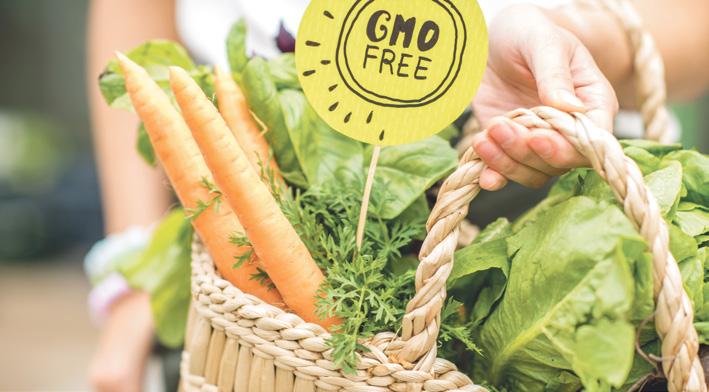
Consumers want to know how their food is produced, and expect that organic production is done without genetic engineering


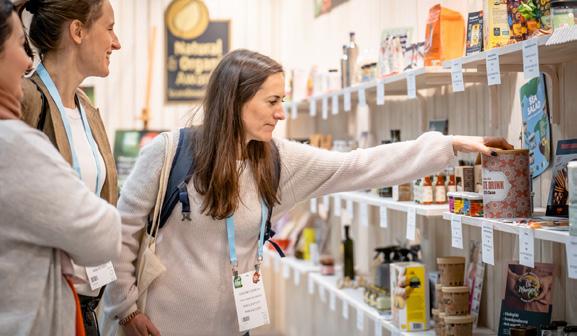






How has the free-from market evolved in recent years and what are the prospects for the future?
We’ve seen the free-from market experience exponential growth over the past few years. In fact, the market is currently estimated to be worth US$80.8 billion globally and expected to reach more than US$150 billion by 2028 – growth of some 13.25%1
Ronald Holman is the Event and Conference Director of Free From Food & Health Ingredients, the leading European trade event showcasing the vast potential of the organic, free-from and vegan market, connecting retailers, food service buyers, importers, traders, manufacturers and technologists.

The 11th edition of the two-day event will take place on 21-22 November at Amsterdam RAI. 5,000+ visitors are expected to attend, including the 400 category management visitors attending the prestigious ‘Captains of The Category Industry Event’ organized by event partner and Dutch Food Magazine: FoodPersonality together with the Dutch Association of Food Trade Marketeers (TMA). The event will include a full educational programme with a line-up of expert speakers across the two days of the show. The winners of FoodPersonality’s prestigious ‘Captain of the Category’ annual survey and the show’s own Healthy Innovation Award will also be presented at the event.
Free From Food & Health Ingredients celebrates editions in Amsterdam, Barcelona, Bangkok, Sao Paulo & Dubai, driving the future of Vegan, Plant-Based, Free From, Organic, Functional and Healthy Lifestyle Food, Drinks and Ready to Market Solutions.

Driving growth is a combination of more people reporting allergies and food intolerances2, and the growth of consumers increasingly turning to free-from foods as a healthier choice.
For instance, in the UK, there are an estimated two million people with a diagnosed food allergy and approximately 600,000 with Coeliac Disease3. However, outside of official medical diagnosis we know that there are many more people who believe they have a sensitivity or intolerance to certain foods: Allergy UK reports that up to 20% of the British population experience reactions to foods4. And the situation certainly appears to be similar in Europe where it’s estimated that anywhere between 11 million and 26 million people suffer from a food allergy, which Allergy UK says translates to 240-550 million potential food-allergic people worldwide4.
How do dietary trends and lifestyles, such as veganism or the gluten-free diet, influence the freefrom food market?
The free-from food market originally developed predominantly out of the need for gluten, dairy, or nutfree products, such as bread, snacks and other prepared foods. However, as time has gone on the market has developed, as consumers increasingly view many free-from foods as offering general health benefits over and above the absence of one or more ingredients. That’s because some freefrom foods tend to be minimally processed or are perceived to be more ‘natural’ than other products.
At the same time, the recent exponential rise of meat-free, plant-based diets is another facet of free-from that barely existed just a few years ago. An EU-funded study5 in 2021 found a 49% rise in Europeans’ consumption of plant-based foods across meat, milk, yoghurt, cheese, ice-cream and fish categories in the two previous years, resulting in sales of €3.6 billion and confirmation they are no longer a niche preserve of animal lovers and environmentalists.
What are the main challenges facing the free-from industry?
The free-from food sector certainly saw some benefits from the pan-
demic lockdown in 2020: More people staying at home and looking for foods with health benefits was a bonus for many brands. However, since then global economic factors have affected the market. For instance, double-digit price inflation – particularly in some food ingredients – has hit the free-from sector as so many shoppers have had to cut back on non-essentials... likely limiting sales to people who really need them. Mintel reports, and I agree, that for brands to appeal to shoppers who don’t need to buy them, they should concentrate on making products that taste better and are more nutritious than standard foods.
Also, I’m expecting that as inflation eases and environmental concerns continue to capture the public
1. https://www.mordorintelligence.com/industry-reports/free-from-food-market
2. Leading food allergy scientist makes a plea<br/>for urgent action amid UK epidemic warning — Natasha Allergy Research Foundation (narf.org.uk)
3. https://www.food.gov.uk/sites/default/files/media/document/fsa-20-01-08-annex-food-hypersensitivity-strategy.pdf
4. https://www.allergyuk.org/about-allergy/statistics-and-figures/
5. https://cordis.europa.eu/article/id/429495-europe-s-plant-based-food-industry-shows-record-level-growth#:~:text=According%20to%20the%20research%20results,the%20availability%20in%20each%20country. AND https://smartproteinproject.eu/european-plant-based-food-sector-grows-by-a-staggering-49-in-two-years/
“Consumers increasingly view many free-from foods as offering general health benefits over and above the absence of one or more ingredients”
“#glutenfree has more than 41m posts on Instagram alone, #freefrom and #nutfree around 800,000 posts each and #freefromfood around 50,000 posts”
imagination, free-from foods – particularly dairy and meat-free – will continue to gain ground with more shoppers who are looking to improve their sustainability credentials.
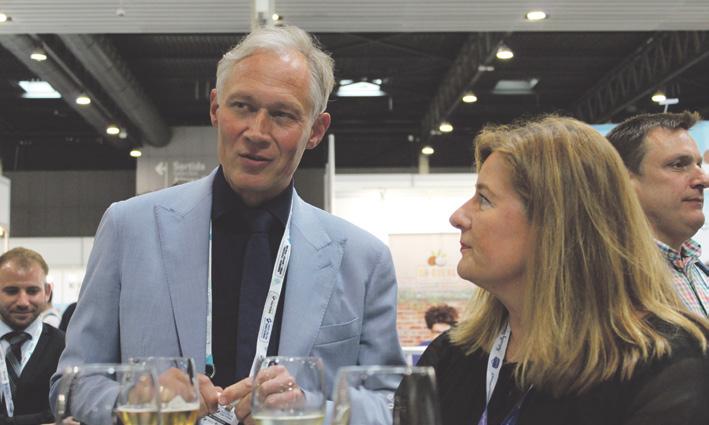
What strategies are effective in reaching and attracting consumers interested in free-from foods?
Clear labelling is absolutely vital for free-from brands... alongside wider health or environmental benefits that can help them stand out from the plethora of other products on the market. For retailers, well signposted shelves help shoppers to distinguish free-from foods – something that is particularly important for people with allergies or intolerances. Mintel’s latest food and drink insights stresses the need for product packaging to clearly state USPs and benefits,
which of course include any freefrom credentials.
In terms of how to reach consumers, social media continues to be pivotal if Instagram hashtags are anything to go by. It’s where brands promote themselves to potential and current consumers and where free-from influencers post recipes and food inspiration. #glutenfree has more than 41m posts on Instagram alone, #freefrom and #nutfree
around 800,000 posts each and #freefromfood around 50,000 posts.

What is your vision for the future of the free-from food market?
The free-from market is here to stay, and we see that people are choosing free-from products as part of a conscious effort to eat more healthily – not just because they have an allergy or intolerance. I believe that, increasingly, more foods pre-
viously considered as ‘mainstream’ will incorporate elements of freefrom where recipes and technologies allow. For instance, we may increasingly see brands switching grains to make more items gluten-free, or using dairy substitutes.
Certainly, free-from is no longer considered the ‘fad’ diet it might have been just a few years ago... and it’s clear that globally demand is rising, so we’re expecting more and more food manufacturers to cater for these demands. And of course, there is still much room for innovation from brands willing to invest both in unique recipes and flavours, and in consumer research to better understand consumer needs.
“Clear labelling is absolutely vital for free-from brands”
Consumer interest in more responsible consumption continues to grow: almost 3 out of 4 French people acknowledge the need to adapt their day-to-day practices to reduce the impact of their consumption1. In such a context, the fight against greenwashing becomes a fundamental task to support the transformation of consumption patterns and guarantee consumer confidence. Consequently, an increasing number of brands now highlight the sustainability, environmental respect, and natural properties of their products. However, how do we know that brands are not exaggerating these qualities, thus misleading consumers?
At the end of May 2023, the DGCCRF (Direction génerale de la concurrence, de la consummation et de la répression des fraudes) published the findings of its largest investigation to date into non-food environmental claims. The investigation reviewed a total of 1,100 communication channels – ranging from packaging to web pages or social networks, which revealed that around 25% of the total number of businesses checked displayed anomalies.
These irregularities corresponded to the promotion of claims that were global (i.e. vague), unjustified, imprecise, ambiguous, or even contrary to legal provisions2. Additionally, many claims were likely to mislead the consumer or were even contrary to the specific regulations for certain products. Some examples of these identified fraudulent claims are:
• Globalized qualities: “environmentally-friendly” or “eco-responsible” are conflicting claims that refer to a general benefit, not a specific environmental impact. These types of claims can mislead consumers if professionals fail to substantiate such claims adequately.
• Unjustified claims: some of the irregularities found were the use
of positive claims without justification, including references like the local origin of a product or the contribution to a particular cause (e.g. donation of part of the cost of the product to an NGO).

A “claim” is synonymous to a company statement issued about the qualities of its product, and more broadly, about the advantages and benefits they are supposed to offer. This claim is usually visible on the packaging, on the label, or in product advertising.
To determine if such a claim is reliable (i.e. it is not misleading), it is necessary to verify that the information provided is clear, unambiguous, and justified based on scientific evidence. Private and voluntary standards, such as NATRUE’s, may provide a basis for the support and assurance of the veracity of such claims. Moreover, NATRUE ensures transparency by employing independent third-party certifications to verify companies’ compliance with their promoted claims.
Equipping consumers with the necessary tools is imperative to be
1. GreenFlex/ADEME, Baromètre de la consommation responsable, octobre 2022
able to make purchases and acquire products in an informed manner. Therefore, guaranteeing consumer confidence is a fundamental task. In fact, data indicates that it requires attention, since almost 3 out of 4 French people express the need for better information regarding the environmental and social impact of the product(s) they buy3
In order to address this concern, also in May, an update of the National Consumption Council’s (CNC) Practical Guide to Environmental Claims was finally released. While primarily intended for consumers, the new version of the Guide acts as a reference tool for professionals and the regulatory authorities as it offers the latest developments in the legal framework, and presents the different claims that can be used for consumers to obtain accurate, reliable, and relevant information. That said, it is necessary to consider that this guide does not have a normative value, but rather constitutes a reference document that describes the state of the law and provides recommendations.
Like previous editions, the Guide incorporates recommendations from the CNC regarding the voluntary use of environmental claims and outlines the conditions for utilising common-
ly used terms like “organic,” “sustainable,” “natural,” and “free from”. For example:
– if the finished cosmetic product is certified organic, or 100% of ingredients/raw materials are certified organic, the claim “organic” can apply to the entire product. If, on the other hand, the overall level of organic ingredients/raw materials is less than 100%, it must be indicated. Otherwise, the “organic” claim should only apply to the specific ingredient(s) to avoid misleading consumers.

if the product is described as “natural” it must contain at least 95% natural components. If the finished product contains less than 95% natural ingredients, only those ingredients can be claimed as natural.
Have you heard about the French ‘Anti-Waste Law’? Following the European Strategy for Sustainability, France wanted to promote an initiative on the issue of packaging; in particular, concerning the limitation of the use of plastics and better consumer information. As a result, on 1st January 2022, the AGEC Law5 (Anti-waste law for a circular economy) entered into force in France with about 50 measures aiming to reduce waste and promote safer practices and more honest communication with consumers.
Among other provisions, the legislation includes the following points:
– There is an obligation to affix the Triman logo to improve waste collection and sorting. The logo must be visible, since the symbol aims to inform the consumer that the product must be recycled appropriately. This legal obligation also
2. https://www.economie.gouv.fr/files/files/directions_services/dgccrf/presse/communique/2023/CP-DGCCRF-Allegations-environnementales-produits-non-alimentaires.pdf?v=1685017325
3. Le guide de la communication responsable, ADEME, 2022
4. https://www.economie.gouv.fr/files/files/directions_services/cnc/avis/2023/Allegations_environnementales/guide_2023.pdf
5. https://perma.cc/9YRB-SQGQ
6. https://natrue.org/digital-labelling-natural-cosmetics-and-the-consumer-natrue-publishes-its-latest-study/

applies to products sold online to France.
– Prohibition of the use of the terms “biodegradable”, “environmentally friendly” or any other equivalent term.
– The AGEC Law obliges companies to provide consumers with information on the environmental characteristics and qualities of the products. According to article 13, manufacturers and importers will inform consumers about aspects such as recyclability, the percentage of recycled material, the use of renewable resources, and hazardous substances’ presence in accordance with EU law. This information must be “viewable or accessible to the consumer at the time of purchase.”


Further objectives of the AGEC Act include:
• Increased share of reused packaging, with targets of 5% reused packaging by 2023 and 10% by 2027.
• 100% of plastics recycled by 2025.
• A ban on the use of plastic microbeads in all rinsed cosmetics by 2026 and non-rinsed cosmetics by 2027.
Regulation is expected to include reference to digital labelling.
To investigate this subject, NATRUE commissioned a study6 in 2022 in order to investigate digital labelling of natural and organic cosmetic products. Specifically, the survey aimed to gauge consumers’ perception, expectation, and trust regarding digital tools when it comes to product information, claims and labelling. According to the results of the study, 57% of shoppers in France would like to see more information on-pack but with additional information available online or in an app. Moreover, French consumers revealed a clear need for more information regarding the sourcing of ingredients and environmental impacts.
labelling:
Consumers are looking to make more sustainable choices, as well as gaining greater transparency about the substances used in products, their
origin, sourcing, manufacturer and social and environment impact. Current regulatory requirements require that on-pack information is mandatory for elements such as ingredients labelling and aspects to help orientate and protect consumers. However, NATRUE questioned whether e-labelling can help to expand a consumer’s awareness and further promote transparency about the product, its ingredients, and its packaging. To this end, the targeted revision of the EU Cosmetics
The study concluded that consumers want products with less clutter; i.e. less information on the pack. This presents an opportunity to provide information through digitized formats, such as a user-friendly app accessible via a QR-Code scanner, allowing for more readable packaging with larger fonts.
BARCELONA
18 - 21 March 2024
Gran Via Venue
www.alimentaria.com
When the first chemical pesticides were developed in the course of the industrial revolution, they seemed to be the ultimate solution to guarantee our food supplies. But what was back then and is still today often being dismissed are the hazardous impacts of most pesticides – not only on our environment and our agro- and biodiversity, but also on our health.
The word already suggests the dangerous effects: “pestis” means plague and “caedere” means killing. Pesticides are hence chemical substances to kill or at least deter undesired plants, animals, or fungi that threaten our crops.


When pesticides are sprayed on the fields, they can contaminate the plants, the yields, the soil, and our ground water. Whilst spraying, the wind may even carry them to our homes and our gardens – and contaminate the fields and crops of organic farmers. Through evaporation and rain, pesticides can be carried even further away, which explains why they can even be found in Antarctica where no farming takes place.
Acute pesticide poisonings have taken many lives around the globe.

A study from 2020 suggests that each year, 385 million cases of unintended acute pesticide poisonings occur worldwide, causing around 11,000 deaths. The symptoms range from skin rashes, fatigue, headaches, joint and muscle aches to vomiting, diarrhea, and nausea. In severe cases, heart, lung, or kidney failure can occur. Pesticides can also cause chronic diseases. In France and Italy, Parkinson’s has already been recognised as an occupational disease among farmers. And various studies repeatedly suggest links between pesticides and asthma, allergies, malformations, growth dis-
orders, obesity, diabetes, breast and liver cancer and leukaemia.

In 2019, 96.302 food samples were analysed regarding pesticide residues by the European Food Safety Authority (EFSA). More than half of the samples were free of quantifiable levels of residues and 45 percent contained one or more residues in concentrations below or equal to permitted levels. Only 2 percent contained residues exceeding the legal maximum. But many foods test positive for multiple pesticide residues. The Pesticide Action Network (PAN) Europe states on its website, that the combined effects of such pesticide-cocktails “may be additive or magnified compared to the ef-
fects observed following exposure to each pesticide alone”
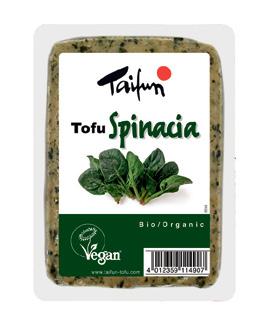

When it comes to fresh fruit and vegetables, washing them under running water and then rubbing them dry is the first step to get rid of pesticide residues on the product surface. American researchers have found that the best way to remove pesticides is to bathe the product for 15 minutes in water which contains 1 percent baking soda, since the soda ensures that pesticide residues are broken down.
The political hesitation of simply banning dangerous poisons bears witness to a strong agricultural lobby, for which a lot of money is at stake. Whilst politics are moving slowly, the best way for end consumers to support a more sustainable agriculture that harms neither ourselves nor our environment is buying organic products. Organic farmers keep pests and diseases under control through systematic crop rotation and combination and the use of natural products. Thereby, they do not only protect our environment, our water and the health of plants, animals, and humans, but also ensure the livelihoods of future generations.